Healthy, oven-baked paleo rutabaga fries. They’re also vegan, autoimmune paleo (AIP), and specific carbohydrate diet (SCD) compliant, need I say more? Fun fact, rutabagas are a cross between a cabbage and a turnip. 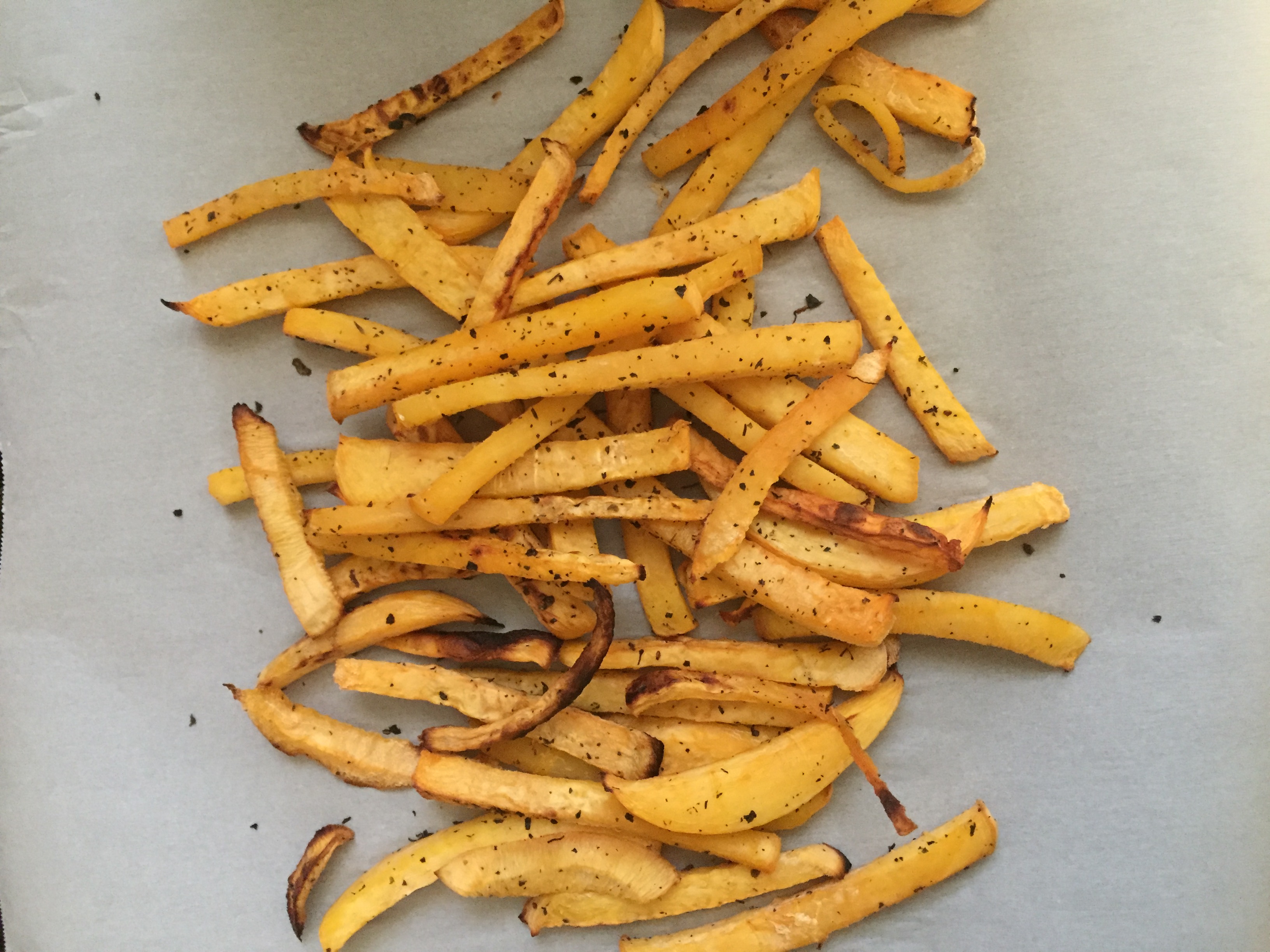
Rutabagas vs White Potatoes
Rutabagas have a much lower glycemic load than white potatoes, which means they should not raise your blood sugar as significantly as white potatoes. This does not mean you should view white potatoes as an enemy, unless they bother you. If you do not have blood sugar issues, you may tolerate white potatoes well, especially when you eat the skin, because the fiber helps keep blood sugar stable.
Nightshades?
White potatoes are nightshades, which many people avoid during the elimination phase of the autoimmune paleo and specific carbohydrate diets. Some patients, especially those with rheumatoid arthritis, flare from eating too many nightshades (white potato, eggplant, tomatoes, peppers, ect), whereas others are able to enjoy nightshades in moderation.
So, are white potatoes bad or nah? (My opinion)
I do not eat white potatoes every day, but I do not notice any issues when I eat them in moderation. The way I look at it is that white potatoes come from the ground and are completely natural. Plus, a baked white potato is such an easy side to order at restaurants. There is nothing wrong with including white potatoes in your diet unless you notice increased inflammation with your autoimmune disease or large blood sugar spikes. So let’s stop hating on white potatoes, but definitely include delicious root veggies like rutabaga, carrots, and yuca to switch up our carbohydrate sources.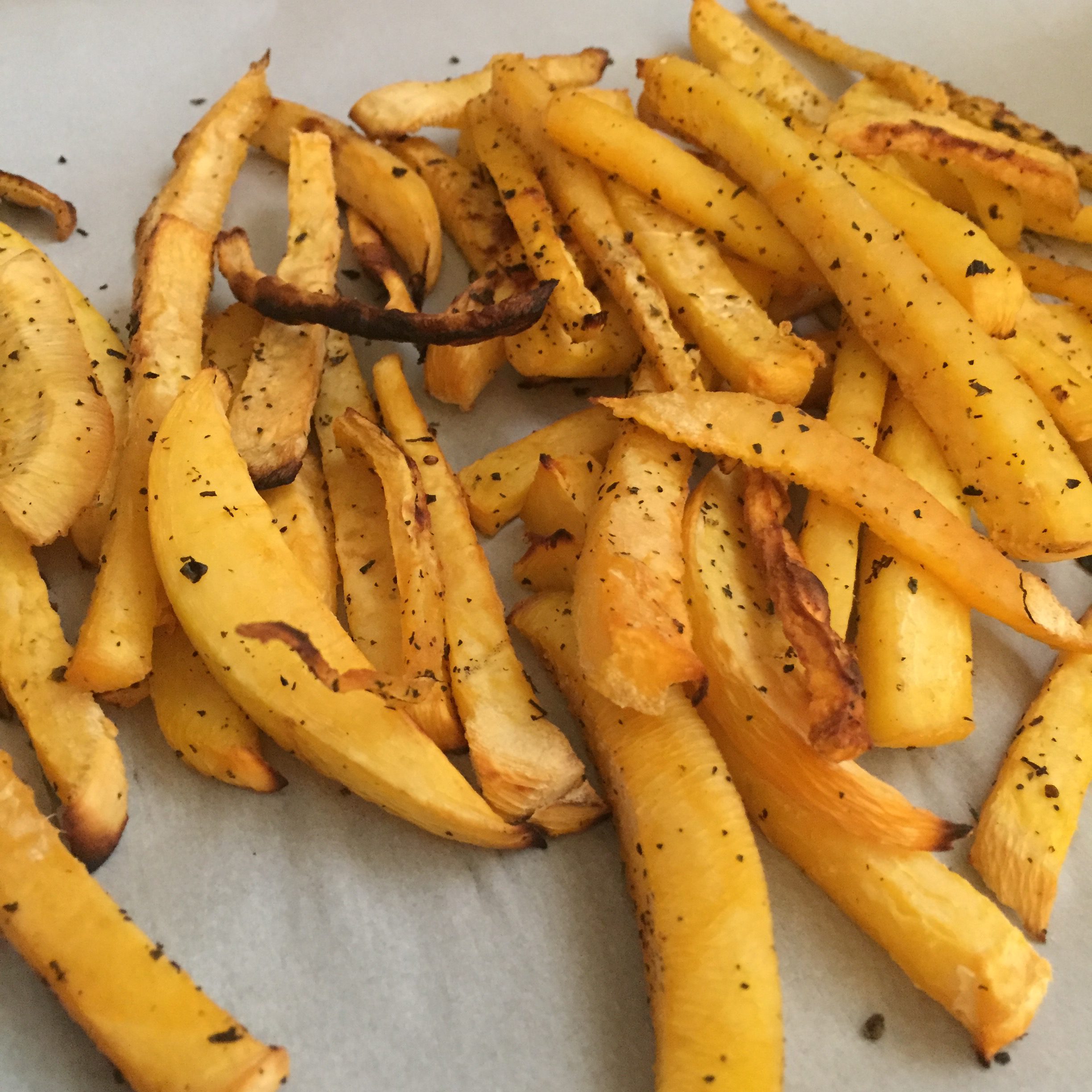 A serving of rutabaga contains about 50% of the recommended daily allowance of vitamin C, plus lots of zinc, dietary fiber, antioxidants, and so many other vitamins and minerals.
A serving of rutabaga contains about 50% of the recommended daily allowance of vitamin C, plus lots of zinc, dietary fiber, antioxidants, and so many other vitamins and minerals. 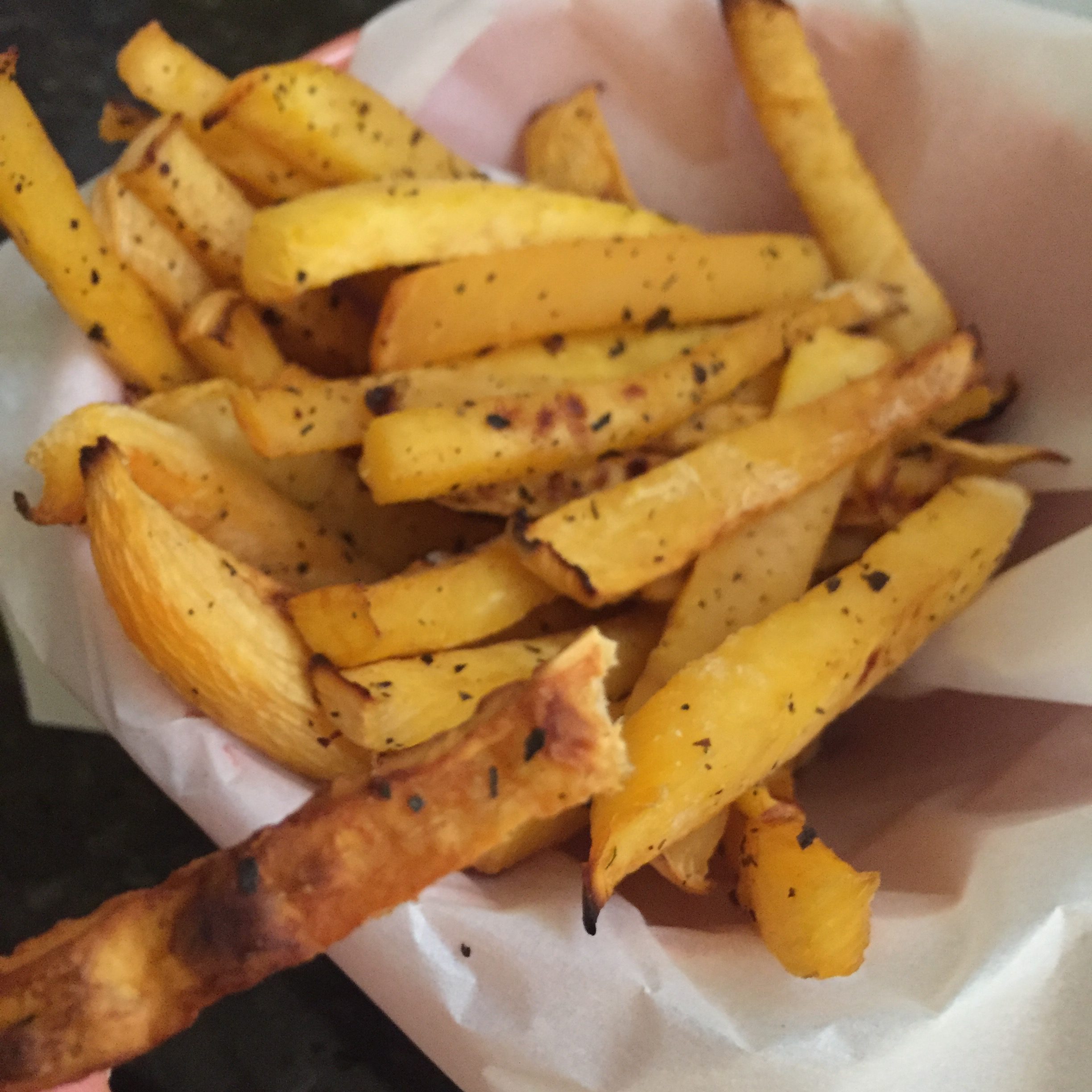 Besides making paleo rutabaga fries, you can add rutabaga to your favorite soups and stews, make mashed “potatoes,” and spiralize it. The possibilities are endless with this delicious root vegetable.
Besides making paleo rutabaga fries, you can add rutabaga to your favorite soups and stews, make mashed “potatoes,” and spiralize it. The possibilities are endless with this delicious root vegetable. 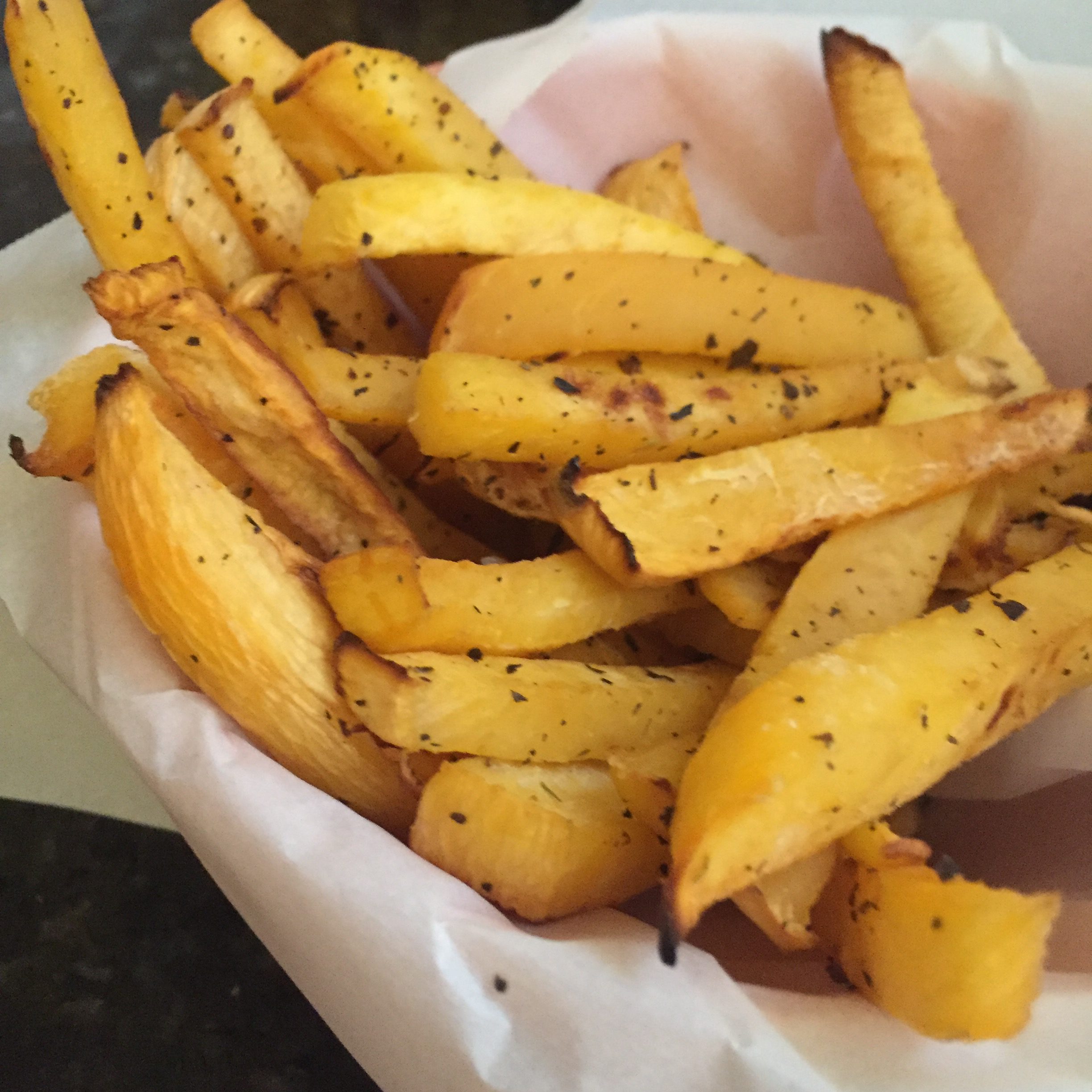
How do you like to eat rutabaga?
Source: United States Department of Agriculture
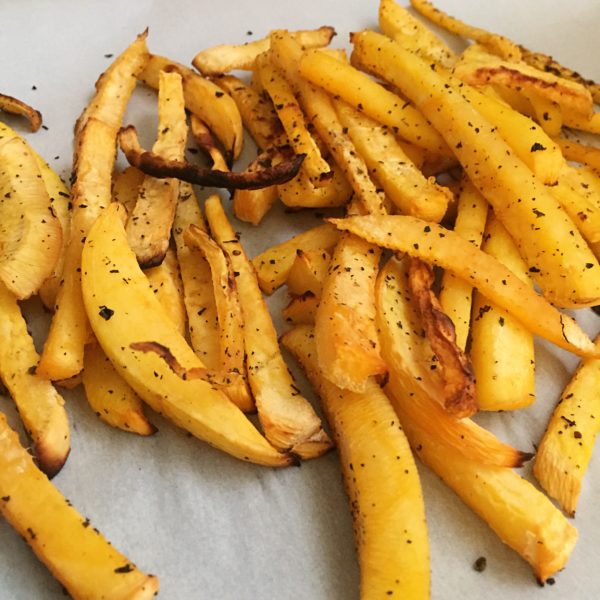
| Prep Time | 10 minutes |
| Cook Time | 40-50 minutes |
| Servings |
people
|
- 1 rutabaga, peeled & sliced into "fries"
- 2 tbsp coconut oil olive oil, avocado oil, any other cooking oils work
- generous dash garlic powder use fresh/minced garlic for SCD
- generous dash onion powder use homemade onion powder or omit for SCD
- dash basil
- dash sea salt
Ingredients
|

|
- Preheat the oven to 400 degrees Fahrenheit (350 F if you're using olive oil)
- Rinse the rutabaga off, cut off the top and bottom, and peel the outer skin.
- Slice the rutabaga in half, then slice each half into thin semicircles
- Cut the semicircles into "fries," and put them in a large mixing bowl
- To make the fries extra crispy, soak them in the large bowl of water for 1-2 hours, but this is completely optional
- Toss the "fries" in the oil and spices
- Lay parchment paper on a baking sheet, and evenly spread the fries on the sheet
- Bake the fries for 40-50 minutes, flipping every 15 minutes. Optional: once the fries are fully cooked, broil on each side on high for 2-3 minutes.
- Enjoy these fries while they're hot. They keep well for meal prep.
The outer skin is tough, but a traditional vegetable peeler should work. If it does not, slice the two ends off, cut the rutabaga in half, then into semicircles. Use a paring knife to remove the outer skin from the semicircles.
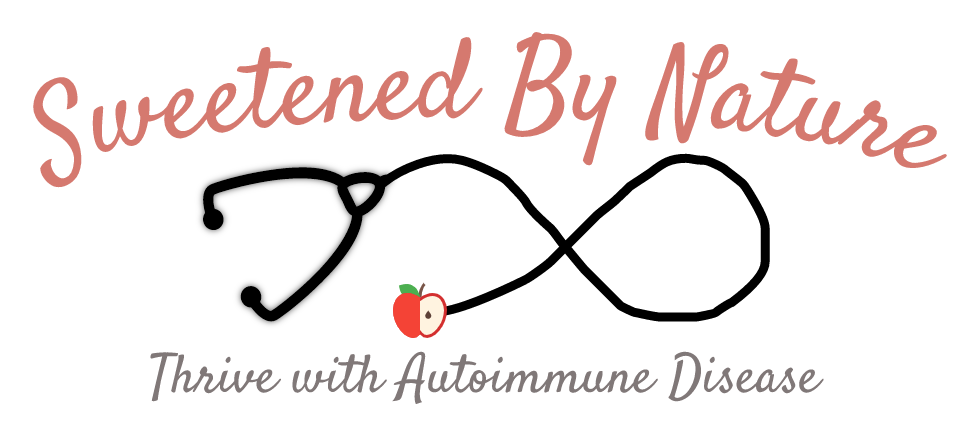
This looks wonderful. I will try it this weekend. Thanks for posting!
I hope you like it!
These were so good!! They would’ve taken longer to crisp up. Followed the recipe and after 45 minutes they still weren’t crispy. We ate them anyway, still great!
Glad to hear it! You could try broiling them at the end for a little extra crisp. They are also great in the air fryer.